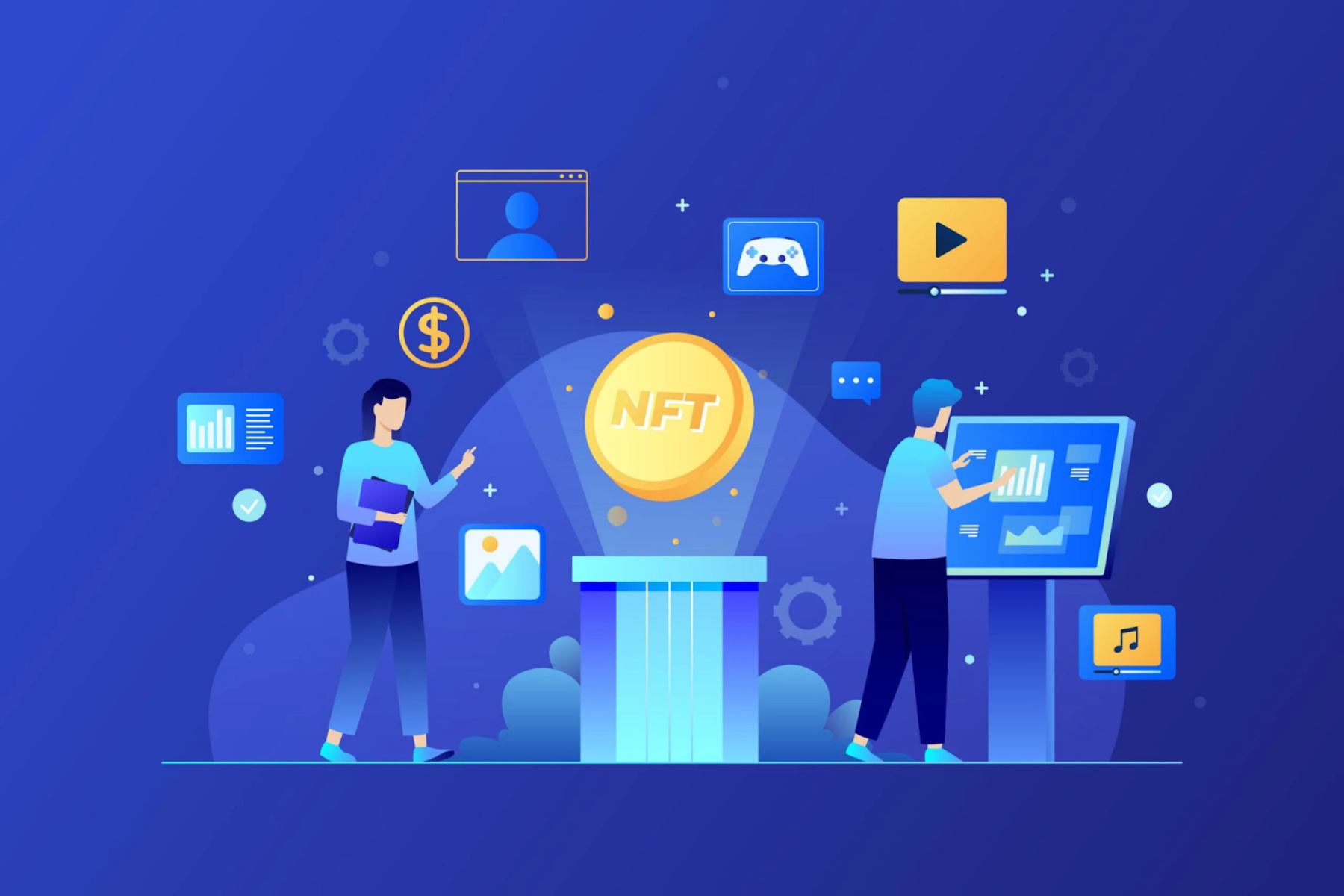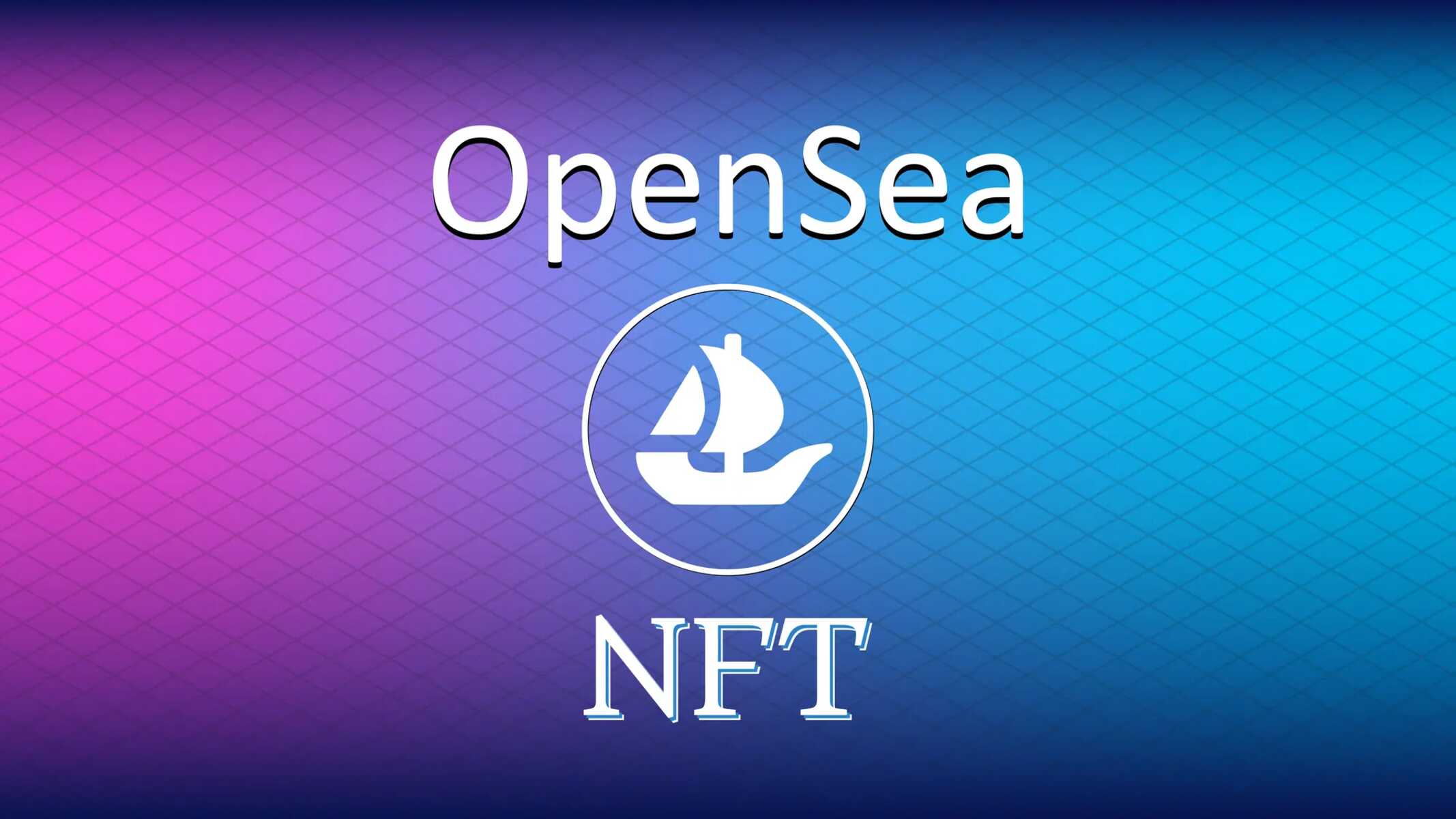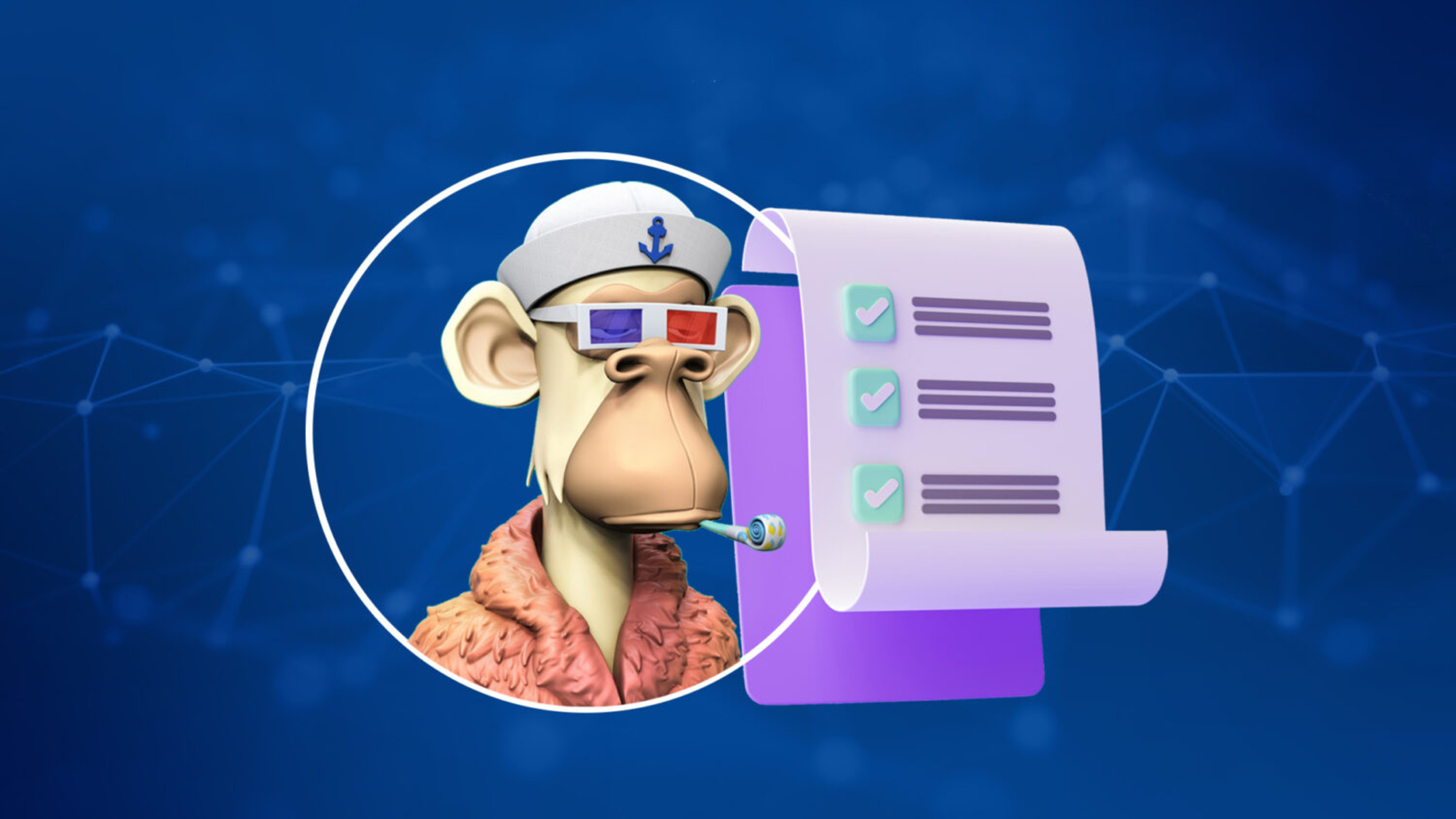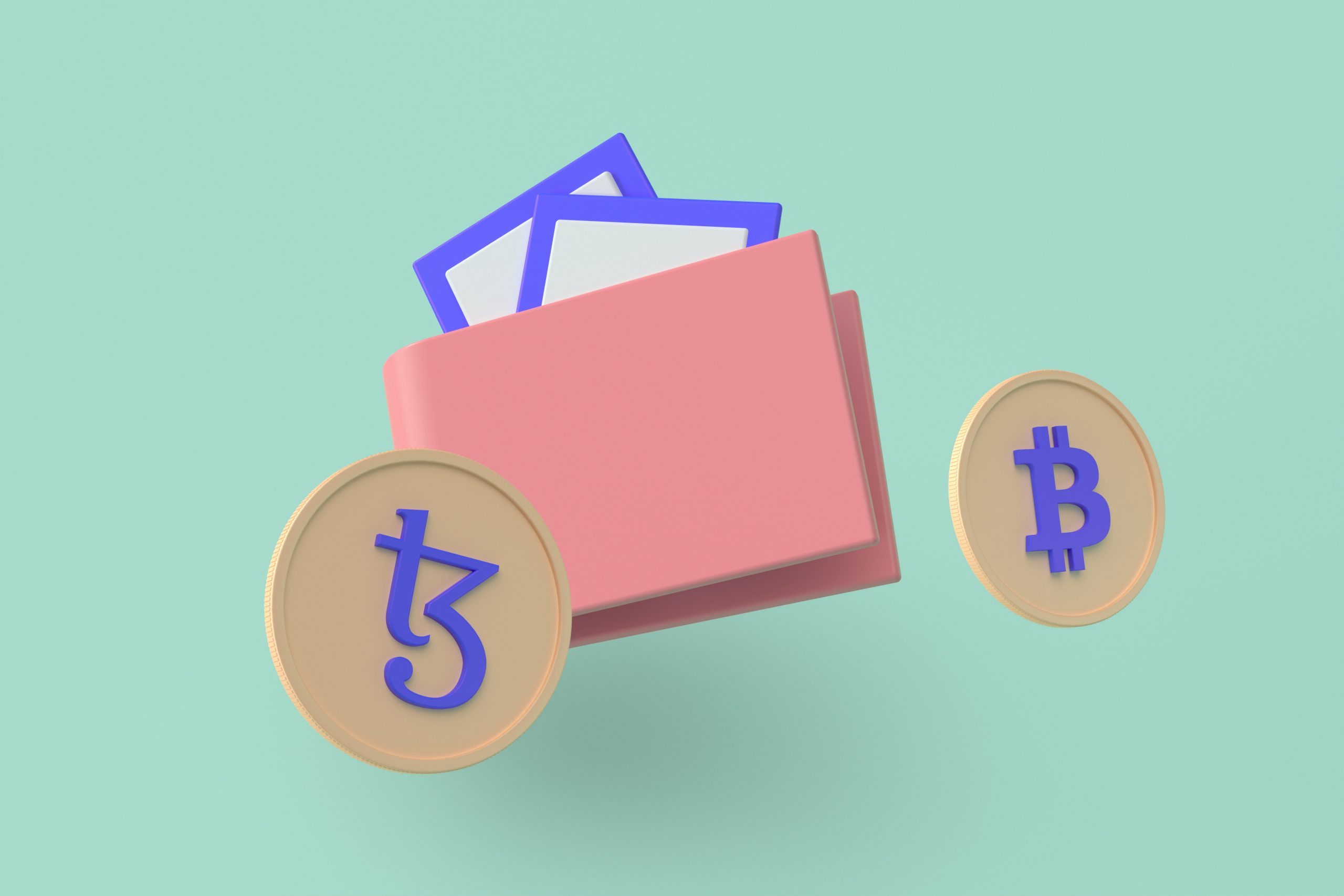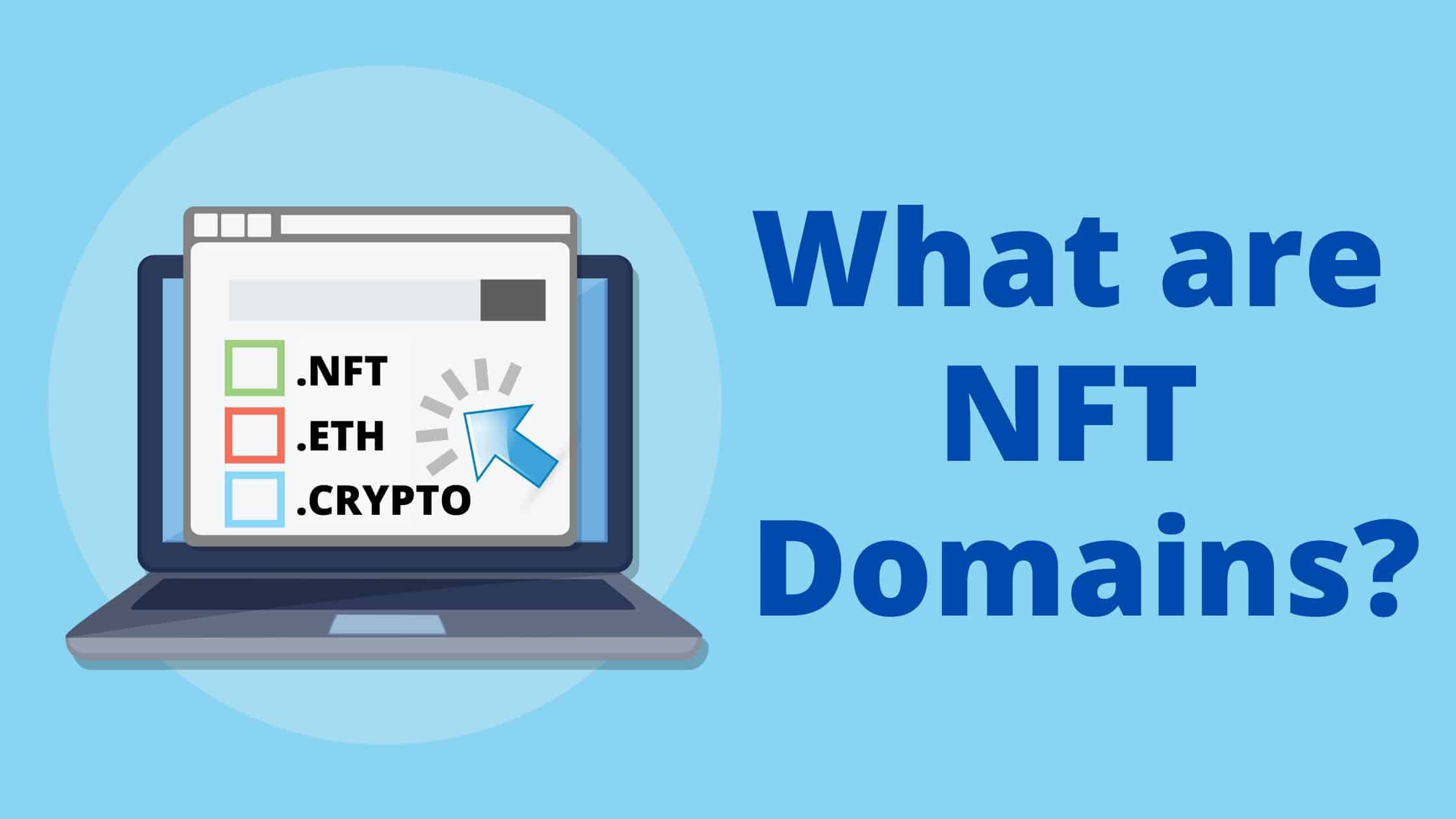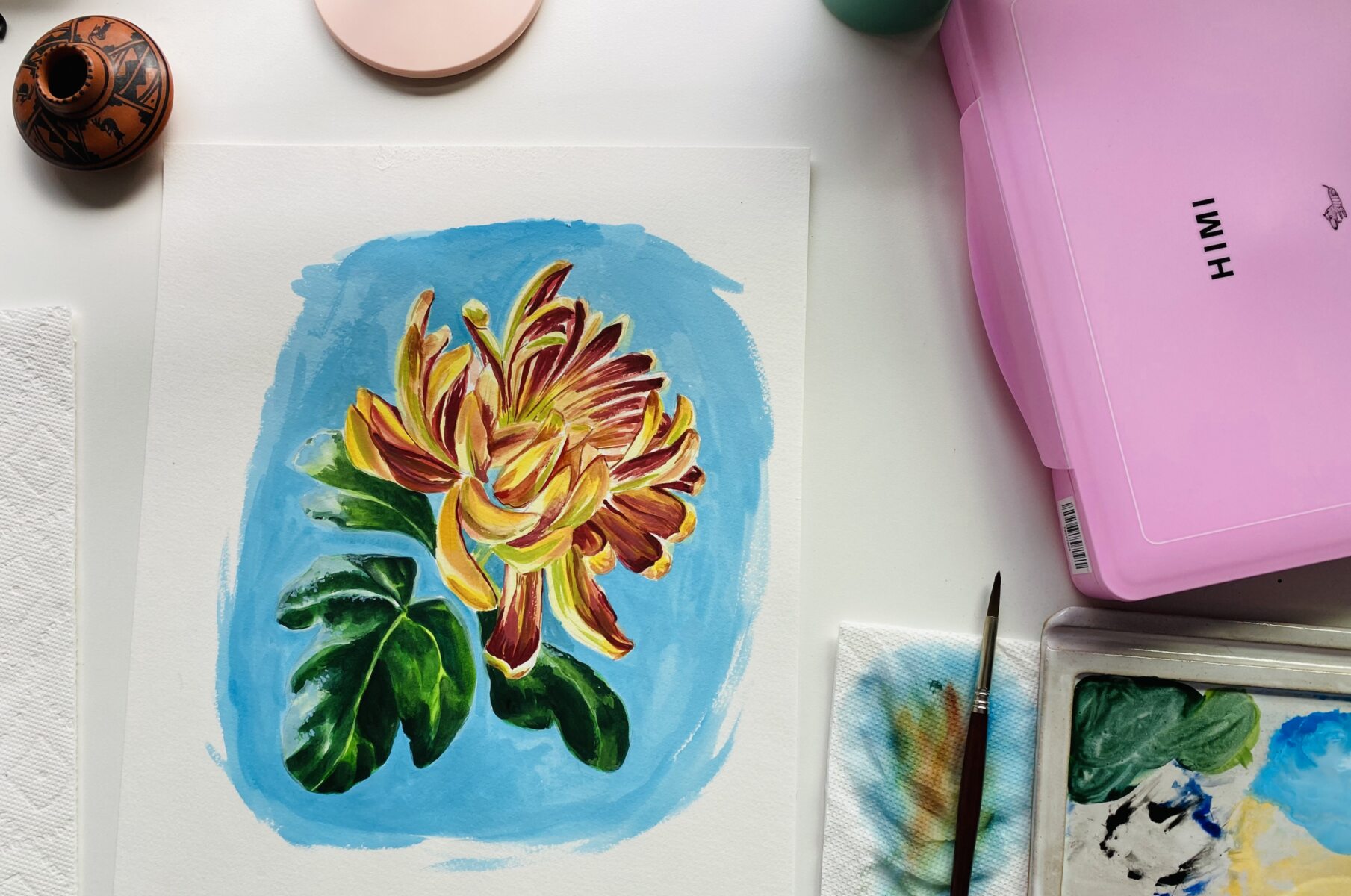Introduction
Welcome to the exciting world of NFTs (Non-Fungible Tokens) and the opportunity to create your own NFT website. In recent years, NFTs have gained immense popularity as a unique form of digital assets, allowing creators and collectors to buy, sell, and trade digital items with proof of ownership and authenticity on the blockchain.
With the rising interest in NFTs, having your own NFT website can be a lucrative venture. It offers a platform for artists, gamers, musicians, and other creators to showcase and sell their digital creations directly to their audience, bypassing traditional intermediaries.
In this article, we will guide you through the process of creating your own NFT website, from choosing the right platform to marketing and promoting your NFTs. Whether you are a beginner or an experienced web developer, this guide will provide you with valuable insights and practical steps to get started.
Before diving into the technical aspects, it is important to understand the basic concept of NFTs. Unlike cryptocurrencies such as Bitcoin or Ethereum, which are fungible and can be exchanged on a one-to-one basis, NFTs are unique and cannot be exchanged on a like-for-like basis. Each NFT has a distinct value and cannot be replaced by another token.
The uniqueness and scarcity of NFTs make them highly desirable to collectors, enabling creators to monetize their digital assets effectively. This has led to a surge in demand and a thriving NFT market.
Now that we have covered the basics, let’s explore the step-by-step process of creating your own NFT website. Whether you are an artist looking to showcase your artwork, a gamer wanting to sell in-game items, or a musician who wants to release exclusive digital music, this guide will help you build a platform to connect with your audience and monetize your creations.
Choosing the Right Platform
When it comes to creating an NFT website, choosing the right platform is essential. There are several platforms available that cater specifically to NFTs, each with its own features and benefits. Here are some factors to consider when selecting a platform:
1. User-Friendliness: Look for a platform that is user-friendly and intuitive, especially if you are new to web development. A user-friendly platform will make it easier for you to navigate the website and manage your NFTs effectively.
2. Security and Trust: Security is paramount when dealing with digital assets and financial transactions. Ensure that the platform you choose has robust security measures in place and a good reputation within the NFT community. Look for platforms that incorporate blockchain technology to ensure transparency and immutability.
3. Customization Options: Consider whether the platform allows you to customize the look and feel of your NFT website. A customizable platform will give you the freedom to create a unique brand identity and showcase your creations in a visually appealing manner.
4. Community and Marketplace: Check if the platform has an active community and a dedicated marketplace for buying and selling NFTs. A vibrant community will provide networking opportunities and potential buyers for your NFTs.
5. Costs and Fees: Evaluate the costs and fees associated with using the platform. Some platforms charge a listing fee or take a percentage of each transaction, so it’s important to understand and factor in these costs when choosing a platform.
6. Integration and Compatibility: If you have specific requirements or want to integrate additional features into your NFT website, ensure that the platform supports these integrations or has APIs available for customization.
7. Reviews and Feedback: Do your research and read reviews and feedback from other users who have experienced the platform. This will give you valuable insights into the platform’s performance, customer support, and overall user satisfaction.
Remember, choosing the right platform is a crucial step as it will determine the functionality and success of your NFT website. Take your time to evaluate different options, weigh their pros and cons, and select the platform that aligns best with your goals and requirements.
Getting Started with Web Development
Now that you have chosen the right platform for your NFT website, it’s time to roll up your sleeves and get started with web development. Even if you have minimal coding experience, don’t worry – there are resources and tools available to help you along the way. Here are the key steps to begin your web development journey:
1. Learn HTML and CSS: HTML (Hypertext Markup Language) is the backbone of web development and is used to structure the content on your website. CSS (Cascading Style Sheets) is responsible for the visual appearance and layout. Get familiar with HTML tags and CSS properties to create the desired structure and design elements for your NFT website.
2. Choose a Front-End Framework: Consider using a front-end framework like React, Angular, or Vue.js to streamline the development process. These frameworks provide pre-built components and tools that can enhance the functionality and responsiveness of your NFT website.
3. Work with a Backend Language: If your NFT website requires dynamic features or database functionality, you will need to work with a backend language like JavaScript (Node.js), Ruby (Ruby on Rails), or Python (Django). Choose a language that aligns with your familiarity and project requirements.
4. Create a Responsive Design: With an increasing number of users accessing the internet through mobile devices, it’s crucial to ensure that your NFT website is responsive and adapts to different screen sizes. Utilize CSS media queries and responsive design techniques to optimize the user experience across devices.
5. Implement SEO Best Practices: Search Engine Optimization (SEO) plays a vital role in driving organic traffic to your NFT website. Optimize your website’s meta tags, URLs, and content to improve its visibility in search engine results. Additionally, ensure your website follows HTML best practices and has valid HTML encoding.
6. Test and Debug: Regularly test your NFT website for cross-browser compatibility, responsiveness, and functionality. Use debugging tools and browser developer tools to fix any issues or errors that may arise during the development process.
7. Stay Updated: Web development is a constantly evolving field, so it’s essential to stay updated with the latest trends and technologies. Follow reputable web development blogs and forums, attend webinars or conferences, and continuously learn and improve your skills.
Remember, web development requires practice and patience. Don’t be afraid to experiment and learn from your mistakes. Seek out online tutorials, courses, and communities where you can connect with other developers and gain valuable insights. With dedication and perseverance, you’ll be well on your way to creating a stunning and functional NFT website.
Designing Your NFT Website
The design of your NFT website plays a crucial role in attracting users and showcasing your digital creations effectively. A visually appealing and intuitive design can enhance the user experience and increase engagement. Here are some key considerations for designing your NFT website:
1. Define Your Brand: Start by defining your brand identity and aesthetics. Consider the theme, colors, typography, and overall style that aligns with the nature of your NFTs and reflects your unique personality or the ambiance you want to convey.
2. Create a Clear Navigation: Your website’s navigation should be simple and intuitive, allowing users to easily explore different sections and discover your NFTs. Use clear labels, logical categorization, and easy-to-find menus to guide users through your website.
3. Showcase Your NFTs: Put your NFTs front and center. Design dedicated spaces or galleries to showcase your digital creations, allowing users to browse through the artwork, view details, and interact with the NFTs. Utilize high-quality images and engaging descriptions to captivate users and highlight the uniqueness of each piece.
4. User-Friendly Layout: Strive for a clean and organized layout that presents information in a visually appealing and easily digestible manner. Consider using grid systems, cards, or a combination of both to structure your content and maintain consistency across different pages.
5. Mobile-Friendly Design: With the increasing use of mobile devices, it’s essential to ensure that your NFT website is mobile-friendly. Optimize the design and layout to adapt to different screen sizes and resolutions, providing an optimal user experience on both desktop and mobile devices.
6. Engage with Visual Elements: Incorporate visual elements like images, illustrations, videos, or animations strategically throughout your website to capture users’ attention and create an immersive experience. Balance these elements with text to provide context and information about your NFTs.
7. Call to Action: Guide users towards taking action, whether it’s purchasing an NFT, joining a community, or subscribing to a newsletter. Incorporate clear and compelling call-to-action buttons or links that stand out and encourage users to take the desired action.
8. Accessibility: Design your NFT website with accessibility in mind, ensuring that it is usable by individuals with disabilities. Follow accessibility guidelines, provide alternative text for images, and use color schemes that are easily readable for users with visual impairments.
9. Don’t Overcomplicate: While creativity is important, avoid overcrowding your website with too many design elements or excessive information. A cluttered design can overwhelm users and distract them from the main focus, which is your NFTs. Keep the design clean, balanced, and focused.
Remember to continuously gather feedback from users and make improvements based on their preferences and needs. Regularly update your design to keep it fresh and appealing. A well-designed NFT website will not only attract users but also create a memorable and enjoyable experience that encourages them to explore and invest in your digital creations.
Creating Smart Contracts
Smart contracts are the backbone of NFTs, as they facilitate the creation, ownership, and transfer of digital assets on the blockchain. A smart contract is a self-executing contract with the terms of the agreement directly written into the code. Here are the key steps to create smart contracts for your NFT website:
1. Select a Blockchain: Choose a blockchain platform that supports smart contracts. Ethereum is the most commonly used blockchain for NFTs; however, other platforms like Binance Smart Chain and Flow also offer smart contract capabilities. Consider the specific features, scalability, and community support offered by each blockchain before making a decision.
2. Understand Solidity: Solidity is the programming language used to write smart contracts on Ethereum. Familiarize yourself with Solidity syntax, data types, functions, and the Ethereum Virtual Machine (EVM). Resources like the Solidity documentation and online tutorials can help you get started with Solidity development.
3. Define NFT Specifications: Determine the specifications of your NFTs, such as the token name, symbol, total supply, and any additional metadata or attributes you want to include. These specifications will be incorporated into your smart contract code.
4. Write the Smart Contract: Use Solidity to write the smart contract code that defines the logic and functionality of your NFTs. This includes creating functions for minting new NFTs, transferring ownership, and querying token information. Implement any additional features or business logic specific to your NFT website.
5. Implement ERC-721 Standard: The ERC-721 standard is a widely adopted standard for NFTs on Ethereum. Implement the ERC-721 interface in your smart contract to ensure compatibility with existing wallets and marketplaces. This will enable seamless integration with the wider NFT ecosystem.
6. Test the Smart Contract: Thoroughly test your smart contract for functionality, security, and potential vulnerabilities. Use tools like Truffle, Remix, or Hardhat for testing and debugging. Consider conducting both unit tests and integration tests to ensure the robustness of your smart contract code.
7. Deploy the Smart Contract: Once you are confident in the functionality and security of your smart contract, deploy it to the blockchain of your choice. This will make your NFTs accessible to users and allow them to interact with the smart contract using their wallets.
8. Verify and Audit: It is recommended to verify your smart contract on the blockchain explorer and consider conducting an external audit for security. This provides transparency and reassurance to users that your smart contract is reliable and free from potential vulnerabilities.
Creating smart contracts can be complex, and attention to detail is essential to ensure the integrity and security of your NFT website. Consider seeking guidance from experienced blockchain developers or engaging with the community to expand your knowledge and address any challenges you may encounter along the way.
Implementing NFT Minting and Trading
After creating the smart contract for your NFTs, it’s time to implement the functionality for minting and trading your digital assets. This will allow you and your users to create and exchange NFTs on your website. Here are the key steps to implement NFT minting and trading:
1. Minting NFTs: Set up a user-friendly interface on your website to allow creators to mint new NFTs. This interface should collect the required metadata and details for each NFT, such as the title, description, image, and any additional attributes. Utilize the minting function in your smart contract to create new unique tokens on the blockchain whenever a user executes the minting process.
2. NFT Marketplace: Design and develop a marketplace where users can buy, sell, and trade NFTs. Implement features such as listing NFTs for sale, setting a price or auction mechanism, and enabling transactions between buyers and sellers. Ensure that the marketplace integrates with your smart contract, allowing for seamless ownership transfer and transaction validation.
3. Wallet Integration: Integrate popular wallets like MetaMask or Trust Wallet on your website to enable users to connect their wallets and interact with your smart contract. This will allow them to view their NFT holdings, initiate transactions, and transfer ownership seamlessly.
4. Secure Transactions: Implement secure and reliable transaction mechanisms. Use cryptographic functions to validate the authenticity of the NFT and the legitimacy of the seller and buyer. Utilize the blockchain’s native functionalities to ensure that transactions are immutable and transparent.
5. Gas Optimization: Gas fees are associated with transaction processing on the blockchain. Optimize your smart contract code and website functionality to minimize gas costs for users. This includes careful consideration of contract architecture, data storage, and transaction complexity.
6. User Profiles: Allow users to create profiles and customize their public profile information. This can include displaying their owned NFTs, transaction history, and any other relevant details that enhance their presence and reputation within the NFT community.
7. Implement Royalties: Consider incorporating royalty mechanisms in the smart contract to enable creators to receive a percentage of future sales each time their NFT is resold on your platform. This provides ongoing revenue streams for artists and incentivizes them to continue creating valuable NFTs.
8. User Feedback and Ratings: Implement a user feedback and rating system to foster trust and transparency within your NFT marketplace. This allows buyers and sellers to rate their experience after a transaction, helping other users make informed decisions.
Remember to conduct extensive testing and security audits to ensure the reliability and security of your NFT minting and trading functionalities. Regularly update your website to address any issues or vulnerabilities that may arise. By providing a seamless and secure environment for minting and trading NFTs, you can attract more users and drive the success of your NFT website.
Integrating Wallets and Payment Gateways
Integrating wallets and payment gateways into your NFT website is essential to enable users to securely manage their assets and facilitate smooth transactions. By integrating popular wallets and reliable payment gateways, you can provide a seamless user experience and increase the accessibility of your NFT platform. Here are the key steps to integrate wallets and payment gateways:
1. Choose Compatible Wallets: Select wallets that are compatible with the blockchain platform you are using for your NFTs. Popular choices include MetaMask, Trust Wallet, and Coinbase Wallet. These wallets support various blockchain networks and make it easier for users to connect their wallets to your NFT website.
2. Provide Wallet Integration: Implement a user-friendly interface on your website that allows users to connect their wallets seamlessly. This can be done via a simple login process or by integrating wallet provider SDKs into your website. Ensure that users can securely connect their wallets without compromising their private keys.
3. Enable Account Balances and Asset Management: Once users have connected their wallets, provide them with information about their account balances and NFT holdings. Display the assets they own, including details like the NFT name, image, and other relevant metadata. This allows users to monitor their assets and make informed decisions.
4. Secure Payment Gateway Integration: Integrate a secure and reliable payment gateway to allow users to purchase NFTs using fiat currencies or cryptocurrencies. Popular payment gateways include Stripe, PayPal, and Coinbase Commerce. Ensure that the payment gateway supports the currencies you want to accept for NFT transactions.
5. Ensure Security and Compliance: When integrating payment gateways, prioritize security and compliance with relevant regulations. Implement secure payment processing protocols, utilize SSL certificates for data encryption, and follow best practices for handling user payment information. Comply with regulatory requirements like KYC (Know Your Customer) and AML (Anti-Money Laundering) guidelines if necessary.
6. Transaction Tracking and History: Provide users with a transaction history that includes details such as the NFT purchased, the price, the date, and the seller’s information. This allows users to keep track of their transactions and provides transparency in the buying process.
7. Support Multiple Payment Methods: Consider offering multiple payment methods to increase accessibility for your users. Accepting different cryptocurrencies and fiat currencies allows users to choose their preferred method, improving the overall user experience.
8. Implement Wallet-to-Wallet Transfers: Enable direct wallet-to-wallet transfers between users. This allows users to trade NFTs or send assets to other individuals without going through a centralized exchange. Implement a secure and user-friendly interface for initiating and executing these transfers.
Remember to test the wallet integration and payment gateway processes thoroughly to ensure a smooth user experience. Regularly update and maintain the integrations to support new wallet versions or emerging payment methods. By providing seamless wallet integration and secure payment processing, you can enhance user trust and make transactions on your NFT website more convenient and accessible.
Testing and Deploying Your NFT Website
Before launching your NFT website to the public, it is crucial to thoroughly test and ensure its functionality, security, and performance. Testing allows you to identify and fix any bugs or issues, providing a smooth and optimized user experience. Here are the key steps to test and deploy your NFT website:
1. Functional Testing: Test all the features and functionalities of your NFT website to ensure they work as intended. Make sure that users can browse through NFTs, view details, initiate transactions, and interact with your smart contracts seamlessly.
2. Cross-Browser and Cross-Device Compatibility: Test your NFT website on different browsers (Chrome, Firefox, Safari, etc.) and devices (desktop, mobile, tablets) to ensure a consistent experience. Check for any design or functionality issues and ensure responsiveness across various screen sizes.
3. Performance Testing: Conduct performance tests to ensure your NFT website can handle high traffic and loads without slowing down. Test the response time, loading speed, and overall performance of your website to provide a smooth browsing experience for users.
4. Security Testing: Perform security testing to identify vulnerabilities and strengthen the security of your NFT website. Conduct penetration testing, analyze the code for potential security flaws, and ensure your platform is protected against common threats, such as cross-site scripting (XSS) attacks or SQL injections.
5. User Acceptance Testing: Involve a group of beta testers or volunteers to conduct user acceptance testing. Gather feedback on the usability, accessibility, and overall user experience of your NFT website. Address any usability issues or suggestions for improvement based on their feedback.
6. Optimize for Search Engines: Implement SEO best practices to improve the visibility of your NFT website in search engine results. Optimize meta tags, URLs, and content with relevant keywords to enhance your website’s ranking. Validate and ensure your HTML encoding is correct to avoid any markup errors that could impact search engine crawling.
7. Prepare for Scalability: Consider the potential growth of your NFT website and ensure it is prepared to handle an increasing number of users and transactions. Optimize database queries, caching mechanisms, and server configurations to ensure scalability and responsiveness.
8. Deployment: Once testing is complete, deploy your NFT website to a production environment. Choose a reliable hosting provider and follow best practices to ensure the security and stability of your website. Regularly monitor your website’s performance and make necessary updates as needed.
It is important to remember that testing and deployment are iterative processes. Continuously monitor and evaluate your NFT website’s performance even after deployment, and be ready to address any issues or improvements that arise. Regularly update your website with new features, optimizations, and security patches to provide the best possible experience for your users.
Marketing and Promoting Your NFTs
Marketing and promotion play a crucial role in driving awareness, engagement, and sales for your NFTs. While creating a great NFT website is important, effectively marketing your digital assets is equally essential. Here are the key steps to market and promote your NFTs:
1. Create Compelling NFT Listings: Craft attention-grabbing listings for each NFT on your website. Write compelling descriptions, highlight the unique features, and use high-quality visuals to showcase the beauty and value of each NFT. Captivate potential buyers with a narrative or story behind your NFT.
2. Utilize Social Media: Leverage popular social media platforms to promote your NFTs. Establish an engaging presence on platforms like Twitter, Instagram, and TikTok. Share behind-the-scenes content, collaborate with influencers, and use hashtags relevant to your niche to reach your target audience.
3. Engage with NFT Communities: Join and actively participate in NFT communities, forums, and marketplaces. Contribute valuable insights, provide feedback to fellow creators, and engage in discussions related to your niche. Building relationships within the community can help you gain visibility and support for your NFTs.
4. Create a Website Blog: Establish a blog on your NFT website where you can share insights about your creative process, highlight new releases, and discuss industry trends. Regularly publish engaging articles and optimize them for search engines to attract organic traffic.
5. Host Giveaways and Contests: Attract attention and grow your audience by hosting giveaways, contests, or challenges related to your NFTs. Encourage participation and offer incentives to winners, such as exclusive NFT drops or limited editions.
6. Collaborate with Influencers: Partner with influencers and tastemakers in your niche who align with your brand and target audience. Collaborate on joint projects, have influencers create content featuring your NFTs, or sponsor their content to expand your reach and tap into their established audience.
7. Guest Blogging and Podcasting: Seek opportunities to be a guest on relevant blogs or podcasts in your industry. Share your expertise, promote your NFTs, and build credibility within the community. This can help drive traffic to your website and increase exposure for your digital assets.
8. Advertisement Campaigns: Consider running targeted advertisement campaigns on platforms like Google Ads or social media platforms. Use carefully crafted ad copy, captivating visuals, and precise targeting to reach potential buyers who may be interested in your NFTs.
9. Engage with Your Audience: Respond to comments, messages, and inquiries on your website and social media channels. Engage directly with your audience, build relationships, and show appreciation for their interest in your NFTs. This personal connection can foster loyalty and encourage word-of-mouth recommendations.
10. Participate in Virtual Events: Attend and participate in virtual events, conferences, and art festivals related to the NFT space. Showcase your NFTs, network with other creators, and connect with potential buyers and collectors. Utilize speaking opportunities to share your expertise and promote your digital assets.
By employing effective marketing strategies and promoting your NFTs on various platforms and channels, you can increase visibility, attract potential buyers, and maximize the success of your NFT website.
Conclusion
Creating an NFT website offers a unique opportunity for artists, creators, and collectors to engage in the exciting world of digital assets. Through this guide, we have explored the step-by-step process of building and launching your own NFT website.
We began by emphasizing the importance of choosing the right platform for your NFT website. Selecting a user-friendly, secure, and customizable platform sets the foundation for success. From there, we delved into the technical aspects of web development, highlighting the significance of learning HTML, CSS, and a backend language to create a visually appealing and functional website.
Design plays a crucial role in attracting users and showcasing your NFTs effectively. We discussed the key considerations in designing your NFT website, such as defining your brand, creating a user-friendly layout, and ensuring mobile responsiveness.
Smart contracts are the backbone of NFTs, and we explored the process of creating and implementing them. Understanding Solidity, defining NFT specifications, and ensuring compatibility with ERC-721 standards are essential steps in this process.
Integrating wallets and payment gateways is vital for seamless asset management and secure transactions on your NFT website. By providing users with convenient wallet integration and reliable payment options, you can enhance the overall user experience.
Before launching your NFT website, thorough testing and optimization are key. Functional testing, cross-browser compatibility checks, and security and performance testing are crucial steps to ensure a smooth user experience.
Finally, we discussed the importance of marketing and promoting your NFTs. Utilizing social media, engaging with NFT communities, collaborating with influencers, and implementing various marketing strategies can drive awareness, engagement, and sales for your NFTs.
As you embark on your NFT website journey, remember that building a successful platform takes time, dedication, and continuous improvement. Stay informed about the latest trends, technologies, and developments in the NFT space, and always strive to provide the best possible experience for your users and collectors.
Now it’s time to unleash your creativity, showcase your digital assets, and create a thriving NFT website. Embrace the endless possibilities of the NFT world and embark on a rewarding journey as a creator or collector in this exciting digital marketplace.







